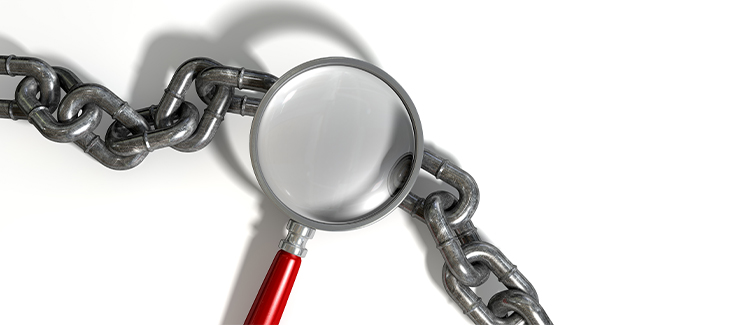Ultrasound imaging is a cornerstone of modern healthcare, offering non-invasive insights into the human body's inner workings. While ultrasound probes have revolutionized healthcare, they are very delicate instruments that are prone to damage if handled carelessly or when improperly reprocessed. When ultrasound probes sustain damage, such as microfractures, tears, harm to the piezoelectric crystals, or fluid ingress, the consequences can directly impact patients, their health, and their outcomes in several significant ways. Here, we delve into the three most substantial impacts of ultrasound probe damage on patients:
Diagnostic Accuracy and Treatment Efficacy
Undoubtedly, one of the most critical aspects of healthcare is accurate diagnosis and effective treatment planning. Ultrasound imaging is pivotal in this process, providing clinicians with detailed visualizations of internal structures and abnormalities. However, when ultrasound probes are damaged, the resulting compromised image quality can hinder an accurate diagnosis and subsequent treatment decisions.
Microfractures, tears, or damage to the piezoelectric crystals can distort ultrasound waves, leading to inaccurate images. These distortions may obscure lesions, tumors, or other pathological findings, potentially delaying diagnosis or leading to misinterpretation. For instance, using a damaged probe to view a tumor site could distort the image, making it challenging to differentiate between benign and malignant growths.
Additionally, fluid ingress can further degrade image quality, making distinguishing between fluid-filled cysts, solid masses, or other tissue abnormalities difficult. Misdiagnosis resulting from damaged ultrasound probes can have profound consequences, including delayed treatment initiation, inappropriate interventions, or missed opportunities for early detection of life-threatening conditions.
Consequently, patients may experience prolonged illness, progression of disease, or suboptimal treatment outcomes due to diagnostic errors stemming from ultrasound probe damage. Furthermore, ineffective treatment strategies resulting from inaccurate diagnoses can lead to increased healthcare costs, additional procedures, and unnecessary patient suffering.
Patient Safety and Comfort
The safety and comfort of patients during medical procedures should be the paramount concerns for healthcare providers. Unfortunately, damaged ultrasound probes can compromise both aspects of patient care. Microfractures or tears in the probe's surface can create sharp edges or rough areas, increasing the risk of tissue trauma or injury during imaging examinations. These fractures can even allow electrical currents to pass through, potentially exposing patients and operators to electrical shock.
Patients may experience discomfort or pain if damaged probes come into contact with sensitive areas of their bodies. Furthermore, compromised image quality due to probe damage may necessitate prolonged scanning times, exposing patients to extended periods of discomfort.
Moreover, suboptimal image quality may prompt healthcare providers to apply increased pressure or manipulate the probe more aggressively to obtain clearer images. This can exacerbate patient discomfort, particularly in cases where probes must be pressed firmly against the skin to visualize deep-seated structures or evaluate vascular flow.
Additionally, fluid ingress can pose infection risks to patients, as contaminated probes may harbor bacteria, viruses, or other pathogens. In one study conducted in Los Angeles, eight out of twenty patients contracted E. coli from a transesophageal echocardiography (TEE) ultrasound probe that had "cracks in the ring of the TEE and a small white fiber hanging loose from the edge." Inadequate cleaning and disinfection practices or failure to promptly detect and address fluid ingress can increase the likelihood of healthcare-associated infections (HAIs), compromising patient safety and recovery.
Psychological and Emotional Impact
Beyond the obvious physical implications, ultrasound probe damage can also have a profound psychological and emotional impact on patients. The diagnostic process can be stressful and anxiety-inducing for many individuals, particularly when facing uncertainty about their health or undergoing invasive procedures.
When ultrasound imaging results are compromised due to probe damage, patients may experience heightened anxiety or distress as a result of misdiagnosis, delayed treatment, or adverse health outcomes. Inaccurate diagnostic findings can lead to persistent worry, affecting patients' quality of life and mental well-being, which we know can lead to persistent and harmful health complications.
Moreover, repeated imaging examinations or procedures resulting from inadequate image quality can contribute to patient frustration, fatigue, or disillusionment with the healthcare system. Patients may perceive delays or inefficiencies in their care, eroding trust in healthcare providers and institutions.
For patients already coping with chronic illnesses, disabilities, or complex medical conditions, the added burden of compromised ultrasound imaging due to probe damage can exacerbate feelings of vulnerability, helplessness, or isolation. Addressing the psychological and emotional impact of ultrasound probe damage on patients requires compassionate communication, empathetic support, and efforts to minimize uncertainty and anxiety throughout the diagnostic process.
It is vital to protect your ultrasound probes from damage. One of the best ways to prevent damage to ultrasound probes during reprocessing is by implementing an automated cleaner disinfector. According to the Association for the Advancement of Medical Instrumentation (AAMI), “An optimum solution to preventing accidental damage of transducers due to over-soaking would be to invest in an automatic system capable of stopping the disinfecting process when the timed cycle is complete.”
It used to be that the only method available for cleaning and high-level disinfection of transvaginal, transrectal, and surface ultrasound probes was manual, but with the release of Ethos® Automated Ultrasound Probe Cleaner Disinfector, the entire process can be automated. Automating the process minimizes probe handling and increases the lifespan of each of your ultrasound devices, ensuring patients get the best care available with no fear of HAI or misdiagnoses.
Ultrasound probe damage directly impacts patients, their health, and their outcomes through its effects on diagnostic accuracy, treatment efficacy, patient safety, comfort, and psychological well-being. Healthcare providers must remain vigilant in detecting and addressing probe damage promptly to mitigate its adverse effects on patient care. Investing in preventive maintenance, staff training, and automated reprocessing devices can help ensure the reliability, safety, and effectiveness of ultrasound imaging in clinical practice. Ultimately, prioritizing patient-centered care and holistic approaches to diagnosis and treatment are essential for optimizing patient outcomes in the face of ultrasound probe damage.


